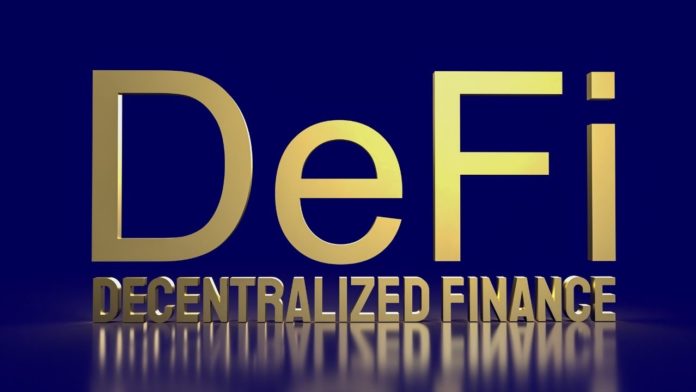DeFi manages financial transactions using cryptocurrencies using blockchain technology. Therefore, DeFi intends to democratize finance by replacing old, centralized institutions with peer-to-peer connections.
These relationships are capable of providing a wide range of financial services, ranging from ordinary banking to loans and asset trading. Therefore, in this article, you will discover more details on how DeFi protocols work.
Centralized Finance (CeFi) vs Decentralized Finance (DeFi)
Almost every facet of banking, lending, and trading is now managed through centralized systems run by regulatory organizations and authorities. So, individuals must interact with a slew of financial middlemen to obtain anything from loans to stock and bond trading.
This way, customers have few options for directly accessing capital and financial products. They can’t avoid middlemen such as banks, dealers, and lenders, who profit from every financial and business transaction. Everyone must pay a fee to participate. However, DeFi changes all these.
However, DeFi cut intermediaries by empowering common people through peer-to-peer trades. Also, DeFi threatens the centralized financial system and creates a new path. Rather than allowing banks to earn a % from their loans, people can earn their loan commissions directly via DeFi protocols.
As a result, there are several ways to earn in the DeFi world and each of these has turned the space into a multi-billion dollar industry:
- Staking: It has proven to be one of the most popular ways of earning crypto as it offers people the chance to earn a passive income from their tokens.
- Liquidity providers: Alongside stakers and lenders, often receive rewards from DeFi protocols, but many investors do not know where these yields and supposed APRs come from.
Where do DeFi Funds Come From?
Shivsak, the co-founder of Magic Invest and a DeFi enthusiast, shared a long thread explaining the sources of the funds available in the DeFi space. The lack of clarity over the source of funding for DeFi protocols could be costly for investors.
Most of the scams in the crypto world have mostly involved DeFi projects. Many of these protocols make unrealistic promises, most of which investors fall prey to.
"Where is the money coming from?"
The MOST important question in DeFi that most investors don't ask.. 👇 🧵
[1/x] pic.twitter.com/vqm1ui1tRI
— shivsak (@shivsakhuja) May 29, 2022
According to Shivsak, “ Many projects are built on unsustainable ponzinomics backed by inflationary tokens. It’s important to identify projects with TRUE revenue sources, where much of that revenue goes to token holders”. Let’s look at some genuine sources of revenue in DeFi:
- Trading fees for LPs
- Protocol fees
- Borrower interest
Now, let’s take a look at the three sources of DeFi protocols:
1) Trading Fees as a Source of Revenue
Trading fees in DeFi refer to the sum paid by traders for trading a pair of assets. These fees are usually disbursed to liquidity providers and serve as a stream of passive income for them. These trading fees appear to be a more realistic source of APR for LPs than incentivized rewards.
However, according to Shivsak, “A lot of the APR comes from the incentivized rewards portion. These rewards are funded through token inflation and are not sustainable. There is no external revenue backing these rewards.”
Most liquidity pools promise huge APR for liquidity providers. But, Shivsak argues that Yield Farms can be somewhat misleading in their claims. According to him, users get a lesser APR than what was displaced. Several factors come into play, making it difficult for these protocols to fulfill their claims. It is often difficult to keep the prices of the tokens from falling. However, we can make a different case for a farm that has some real utility.
The truth about Liquidity Pool APRs 🧵
i.e – No, you're not really getting 420% APR and here's why👇
[1/x]
— shivsak (@shivsakhuja) March 15, 2022
Moreover, trading fees appear to hold more water than incentivized rewards. They are a more stable source of revenue. Some of the top DEXes, such as Trader Joe, all have specified trading fees that will serve as rewards for LPs. While looking for revenue, it is best to be sure that the token will accrue from the revenue.
2) Protocol Fees as Revenue Source
Protocol fees refer to the fees a protocol receives in exchange for a service. For example, bridges charge for moving funds between chains and this is a source of revenue. Other protocol fees would include fund management fees which some platforms take for helping their users manage their funds.
Moreover, NFT platforms like LooksRare generate income by charging 2% for every NFT sale. This is with the exception of private sales. According to Shivsak, LooksRare has made more than $500m in revenue since inception. So, these fees provide these protocols with a channel to earn.
3) Borrow Interest as a Source of Revenue
Borrower interest is another good revenue source even though it mostly flows to lenders. Shivsak wrote, “ The actual $ that the protocol gets to keep and share with token holders = interest from borrowers – interest paid to lenders.”
Borrow Interest
—–Interest from borrowers is also real revenue, though most of it goes to lenders.
The actual $ that the protocol gets to keep and share with token holders = interest from borrowers – interest paid to lenders pic.twitter.com/2yEbeHZr3w
— shivsak (@shivsakhuja) May 29, 2022
So, knowing these sources of revenue in DeFi can help you predict a stable project from an unstable one. Many DeFi projects try to lure users with incentives. But, via proper research, you can predict if these protocols can keep up to their claim.
⬆️ Finally, for more cryptocurrency news, check out the Altcoin Buzz YouTube channel.
⬆️ Above all, find the most undervalued gems, up-to-date research, and NFT buys with Altcoin Buzz Access. Join us for $99 per month now.




























